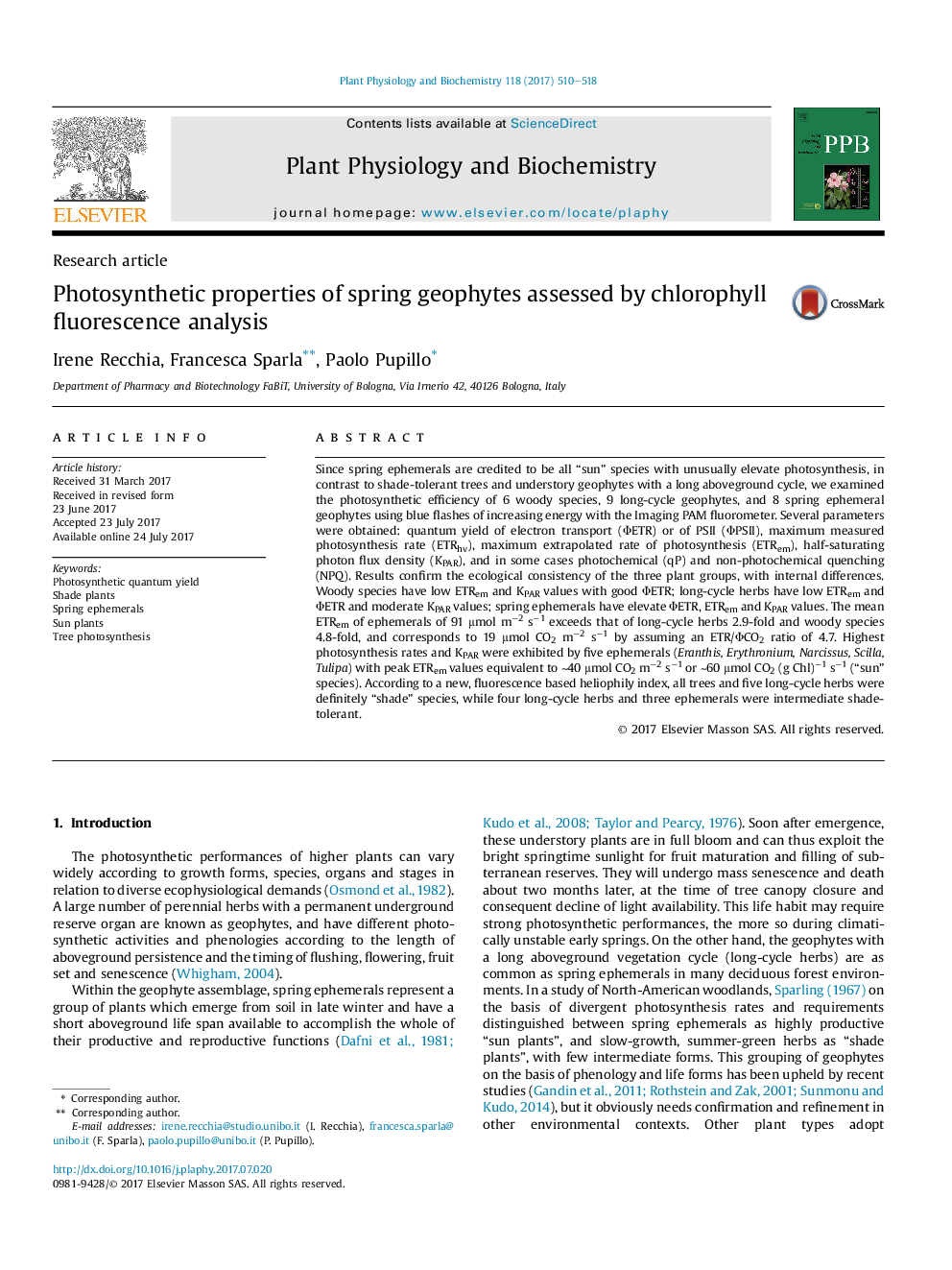| کد مقاله | کد نشریه | سال انتشار | مقاله انگلیسی | نسخه تمام متن |
|---|---|---|---|---|
| 5515467 | 1541903 | 2017 | 9 صفحه PDF | دانلود رایگان |
- 23 Plant species were analyzed by Imaging PAM chlorophyll fluorescence.
- Spring ephemerals have higher photosynthetic performances than long-cycle geophytes and trees.
- ETR values obtained at PAR flashes <61 μmol mâ2 sâ1 are diagnostic of ecophysiological categories.
Since spring ephemerals are credited to be all “sun” species with unusually elevate photosynthesis, in contrast to shade-tolerant trees and understory geophytes with a long aboveground cycle, we examined the photosynthetic efficiency of 6 woody species, 9 long-cycle geophytes, and 8 spring ephemeral geophytes using blue flashes of increasing energy with the Imaging PAM fluorometer. Several parameters were obtained: quantum yield of electron transport (ΦETR) or of PSII (ΦPSII), maximum measured photosynthesis rate (ETRhv), maximum extrapolated rate of photosynthesis (ETRem), half-saturating photon flux density (KPAR), and in some cases photochemical (qP) and non-photochemical quenching (NPQ). Results confirm the ecological consistency of the three plant groups, with internal differences. Woody species have low ETRem and KPAR values with good ΦETR; long-cycle herbs have low ETRem and ΦETR and moderate KPAR values; spring ephemerals have elevate ΦETR, ETRem and KPAR values. The mean ETRem of ephemerals of 91 μmol mâ2 sâ1 exceeds that of long-cycle herbs 2.9-fold and woody species 4.8-fold, and corresponds to 19 μmol CO2 mâ2 sâ1 by assuming an ETR/ΦCO2 ratio of 4.7. Highest photosynthesis rates and KPAR were exhibited by five ephemerals (Eranthis, Erythronium, Narcissus, Scilla, Tulipa) with peak ETRem values equivalent to â¼40 μmol CO2 mâ2 sâ1 or â¼60 μmol CO2 (g Chl)â1 sâ1 (“sun” species). According to a new, fluorescence based heliophily index, all trees and five long-cycle herbs were definitely “shade” species, while four long-cycle herbs and three ephemerals were intermediate shade-tolerant.
Journal: Plant Physiology and Biochemistry - Volume 118, September 2017, Pages 510-518
